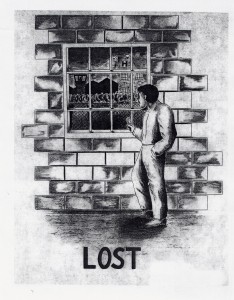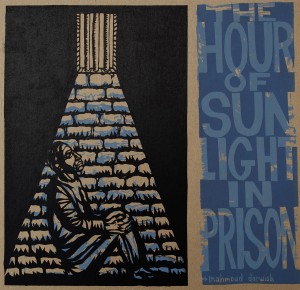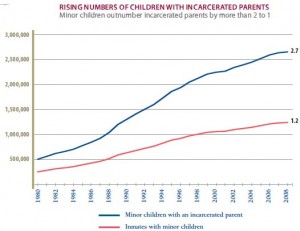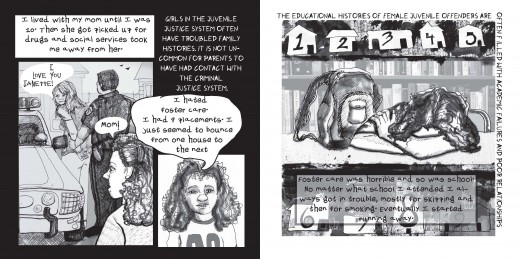 As part of my ongoing attempt to feature original writing from prisoners, I would like to share this essay by Joseph Dole who is currently incarcerated at TAMMS Supermax Prison. Special thanks to my friend Lois of The Real Cost of Prisons Project who shared these powerful words with me. If you are moved to do so, feel free to send a note to Mr. Dole to let him know your thoughts about his writing. He can be reached here:
As part of my ongoing attempt to feature original writing from prisoners, I would like to share this essay by Joseph Dole who is currently incarcerated at TAMMS Supermax Prison. Special thanks to my friend Lois of The Real Cost of Prisons Project who shared these powerful words with me. If you are moved to do so, feel free to send a note to Mr. Dole to let him know your thoughts about his writing. He can be reached here:
K84446 Tamms CC
8500 Supermax Rd
Tamms, IL 62988
The Meaning of “Life”
By Joseph Dole
Rarely am I asked what it’s like to serve a life-without-parole sentence. Arguing for a death sentence for my first felony conviction, the State’s Attorney implored the judge not to allow me to spend the rest of my life on a virtual “vacation” in prison. I can unequivocally state that it is not vacation.
A life-without-parole sentence means a million things, because, as its name suggests, it encompasses a person’s entire remaining life.
It means enduring being reduced to a second-class citizen in the eyes of most people. It means decades of discrimination from the courts and public. “Prisoner”, “inmate”, or “convict” each have a strictly pejorative use in the media or pop culture. Those terms become the sole defining characteristic of a man’s entire character.
It means that courts will turn a blind eye to any act against you unless it causes “atypical and significant hardship”. A free man may find protection in the courts from emotional and mental harm, but a prisoner can only find protection from “atypical and significant” physical harm, and that’s dependent on finding an objective and unbiased judge and enough citizens who can set aside their personal biases against prisoners to fill a jury box and render a fair verdict – a nearly impossible feat. So when you’re stripped naked and left in a concrete box with nothing but a toilet for four days without cause, as a prisoner you have no recourse in the courts. When you’re beaten to a bloody mess while handcuffed, as a prisoner you’re more likely to encounter a jury that will conclude you deserved what you got, regardless of the circumstances.
It means that after being “spared” the death penalty and receiving your life-without-parole sentence, you lack all the procedural safeguards against a wrongful conviction that a death sentence would have entailed, solely because you were found undeserving immediate death. How ironic it is that the worse you are deemed to be, the better chance of proving your innocence and regaining your freedom.
It means a lifetime of censorship, where you’re told what books and magazines you can read, what movies can watch, even what hairstyles you can sport, and where every letter coming in or going out is subject to inspection.
It means a complete lack of privacy forever, and a complete indifference to your physical and medical health until someone fears being sued.
It means a constant, heightened risk of catching a deadly disease. You’re captive in an environment where staph infections run rampant, where people still die from tuberculosis, where the population has twice the rate of HIV infection compared to non-prisoners, and where up to forty percent are infected with hepatitis. An environment where there’s nowhere to run from many of these diseases because you’re forced to use communal toilets and showers.
It means three meals a day of the poorest quality food that the least amount of money can buy without killing the inmate population.
It’s a daily existence where trust is non-existent and compassion is not allowed. Not only is compassion viewed as a sign of weakness in the prison milieu, but it is, ironically, actively discouraged by the prison administration. If your neighbor is destitute and you want to assist him by giving him soap, paper, or even a snack to supplement the meager meals, you can only do so at risk of being written a disciplinary ticket for “trading and trafficking”.
It’s a never-ending pressure cooker where the stress and anxiety compound daily as you constantly have to watch your back. Soldiers returning from Iraq understand this. It’s a major factor in Post-Traumatic Stress Disorder. The constant fear for your safety and the need for 24-7 situational awareness Frays at your nerves. Now imagine not a 12-month tour but a lifetime deployment.
It means you’re constantly being told that you aren’t worth rehabilitation and thus are ineligible for nearly every educational or vocational program. Your life sentence disqualifies you from any state or federal grants to pursue an education and even the Inmate Scholarship Fund (founded by a prisoner) has no qualms about telling you that you’re ineligible for a scholarship because you’re never going to get out and contribute to society.
It means convincing yourself daily that your life has value even when the rest of the world tells you you’re worthless. It’s a lifetime spent wondering what your true potential really is, and yearning for the chance to find out.
It mean decades of living with double standards, where any guard can call you every profanity ever invented without any fear of punishment, but where if you were to utter a single one in response, or say anything that even resembles insolence, you’ll be written a disciplinary ticket, lose privileges, such as phone calls and commissary, and be subjected to a month of disciplinary segregation.
It means the state constitution is irrelevant where lifers are concerned. Article 1, Section 11 of the Illinois Constitution states: “All penalties shall be determined both according to the seriousness of the offense and with the objective of restoring the offender to useful citizenship”, but the courts have decided that politics, revenge, and hatred of “criminals” trumps the constitution, and have thus rendered the above section essentially meaningless by their refusal to rule life-without-parole sentences unconstitutional, even if it is the defendants first felony conviction on a theory of accountability, as is my case. This also put the lie to the American maxim that everyone deserves a second chance.
It means that you’re especially vulnerable to incomprehensible punishments, such as a lifetime of disciplinary segregation. I was give indeterminate disciplinary segregation after being found guilty of my sole disciplinary infraction. That was 8 years ago, yet here I remain. I’ve been told (on more than one occasion) that I will never be allowed out of indeterminate disciplinary segregation. So I will continue to endure conditions for the rest of my life which are known to cause mental illness after just 3 months. It means that I will never taste another Hostess cake. Nor play softball or any group activity ever again. More importantly, it means that I will never have physical contact with another human being for the rest of my life, including my 11 and 12 year-old daughters.
It means being incapable of taking care of your grandparents and parents as they reach their final years.
It means missing out on every important event in your children’s lives, unable to raise them; impotent to protect them or assist them in any meaningful way. It means they’ll grow up resenting you for the thousands of times they needed you and you weren’t there.
A life-without-parole sentence means constant contemplation of a wasted life. A continual despair as to your inability to accomplish anything significant with your remaining years. A life spent watching as each of your family members and friends slowly drift away from you leaving you in a vacuum, devoid of any enduring relationships.
It’s a persistent dashing of hopes as appeal after appeal is arbitrarily denied. It is a permanent experiment in self-delusion as you strive to convince yourself that there is still hope.
It’s a compounding of second upon second, minute upon minute, hour upon hour, of wasted existence, and decade upon decade of mental and emotional torture culminating in a final sentence of death by incarceration.
These though, are simply futile attempts to describe the indescribable. It’s like trying to describe a broken heart or communicate what it feels like to mourn the death of your soul mate. The words to convey the pain do not exist. When you’re serving a life-without-parole sentence it’s as if you’re experiencing the broken heart of knowing you’ll never love or be loved again in any normal sense of the word, while simultaneously mourning the death of the man you could have and should have been. The only difference is that you never recover, and can move on from neither the heart break nor the death because the pain is renewed each morning you wake up to realize that you’re still here, sentenced to life-without-parole. It’s a fresh day of utter despair, lived over and over for an entire lifetime.




